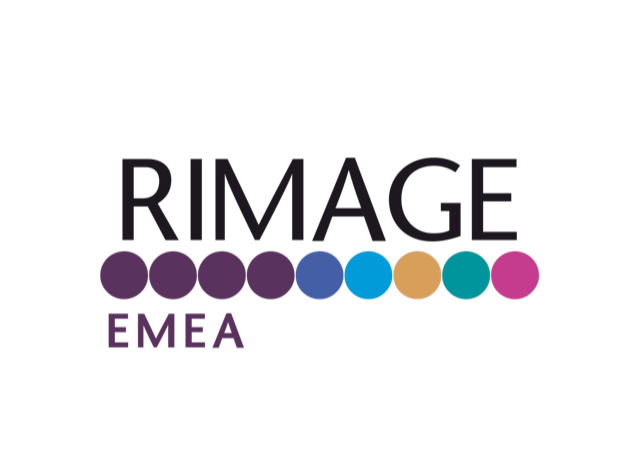Rimage Simplifies Release of Information (ROI)
“The only option we could provide our patients before we had the Rimage system was paper print-outs of their medical records. The process was not secure, since the print-outs could be misplaced or stolen.”
CUSTOMER
Major Medical Healthcare Center and Hospital
CHALLENGE
- Satisfy meaningful use requirements
- Provide on-demand patient electronic medical records (EMR) in a secure format
- Save time and money by eliminating printing paper medical records
SOLUTION
- Rimage Professional™ Disc Publisher
- Integrated with Cerner Millennium® Clinical Reporting XR
A major medical healthcare center and hospital on the West Coast has facilities including a 108-bed acute care hospital, two outpatient clinics, and an ambulatory surgery center, each offering a wide range of medical services. The organization has a history of caring for people in the community and is committed to providing excellent service to patients. With diverse services and locations, they process large amounts of patient medical records for hospital admissions, transfers, and additional outpatient services.
“Without the Rimage system, it would have taken an entire workday to get the patient’s medical records printed and ready for transferring.”
THE CHALLENGE
The Head RN and Clinical Informatics Liaison at the healthcare center had a challenge: implement a process that would meet U.S. Medicare and Medicaid electronic medical records (EMR) meaningful use requirements, ensuring secure distribution of records to patients. Under this U.S. program, hospitals and physicians were awarded monetary incentives between the years 2011-2015 for adopting electronic medical records. If EMR use was not met within the allotted amount of time, the organization would not only forfeit those incentive payments, but also would pay thousands of dollars in fines starting in 2015.
The organization also faced the challenge of providing on-demand records to patients. New regulations required the hospital to provide patients with an electronic copy of their discharge instructions at departure. This meant converting patient records to an electronic format and providing a CD or DVD for patients as they left the hospital. Before purchasing the Rimage solution, they could not offer patients electronic medical records. “The only option we could provide our patients before we had the Rimage system was paper print-outs of their medical records. The process was not secure, since paper could be misplaced or stolen,” said the head RN. “It was tedious, expensive and time consuming to print medical records on a regular basis.” They needed to produce medical records in electronic format and publish to CD or DVD efficiently for the patient. The workflow also needed to be secure, due to medical privacy laws.
THE SOLUTION
The organization purchased the Rimage disc publishing system with an integrated Everest® thermal retransfer printer. The Rimage solution was part of the modernization of their electronic medical records that included digitizing the vast amounts of paperwork and archiving to their current health information systems. A smooth transition to EMR required managing both paper and digital records in a hybrid environment, while navigating the change-over to a fully digital workflow. The Rimage system, in combination with Cerner Millennium® Clinical Reporting XR software, quickly converted paper and electronic medical records into an encrypted disc, satisfying meaningful use requirements for patients by delivering accurate and secure information.
THE RESULTS
Purchasing the Rimage system allowed the organization to meet meaningful use standards with patients’ security intact. Compliance with release of information (ROI) requirements for patients brought the hospital’s standards and practices in-line with meaningful use requirements.
In addition, the organization saved a large amount of employee time by eliminating the tedious job of printing paper copies of medical records.
The Rimage solution allowed them to fulfill the ROI and provide patients with their complete medical record on-demand on an encrypted disc. This change increased patient engagement with their medical records. They can now provide a service meeting meaningful use requirements and allow patients to be more active in their own healthcare.
Providing a Service Benefiting the Patient
The department has already seen dramatic improvements in efficiency with the Rimage system. “We had a patient being transferred to another facility for additional care who had been with us for over a month. The medical records needed to transfer the patient were over 4,500 pages. With the Rimage system, it took a half-hour to output the records to disc. Without the Rimage system, it would have taken an entire workday to get the patient’s medical records printed and ready for transferring,” she said.
Medical Records from Multiple Providers
The organization also has a portal to receive patient medical records from other sources. Coordination of healthcare services from different providers is streamlined with the Cerner Millennium software and integrates with the Rimage system. Once the information is collected in the Cerner Millennium software, health information management (HIM) administrators use Cerner Millennium Clinical Reporting XR to quickly submit a publishing job to the Rimage system, which outputs the patient’s medical records to a secure disc.
Industry experts recognize that providing the ability to electronically release information is only a small step in the process of meeting meaningful use requirements.
“The only option we could provide our patients before we had the Rimage system was paper print-outs of their medical records. The process was not secure, since the print-outs could be misplaced or stolen.”
Head RN and Clinical Informatics Liaison at a Major Medical Heathcare Center and Hospital
© Cerner copyright Cerner
Millennium® Clinical Reporting
XR software.

